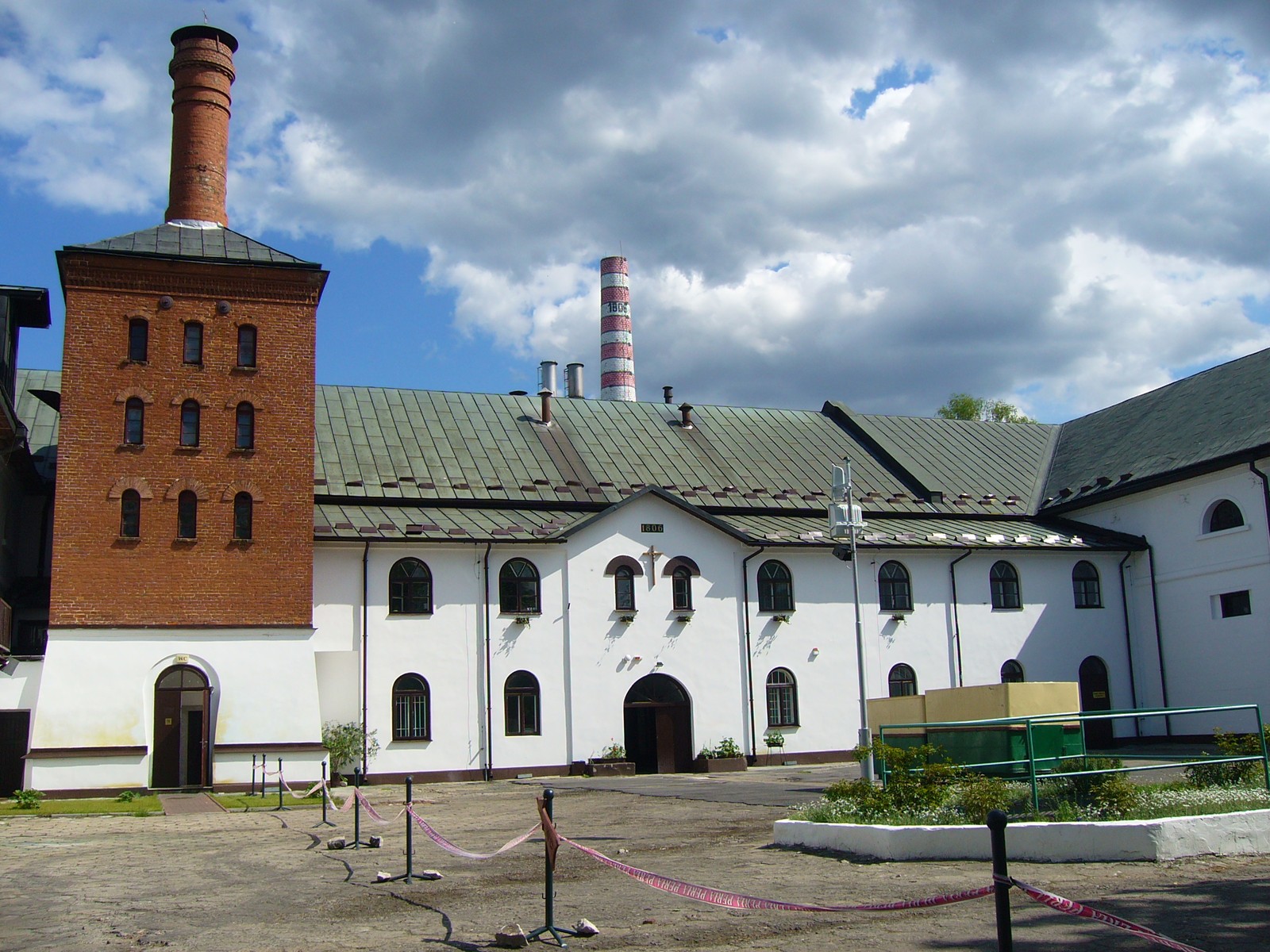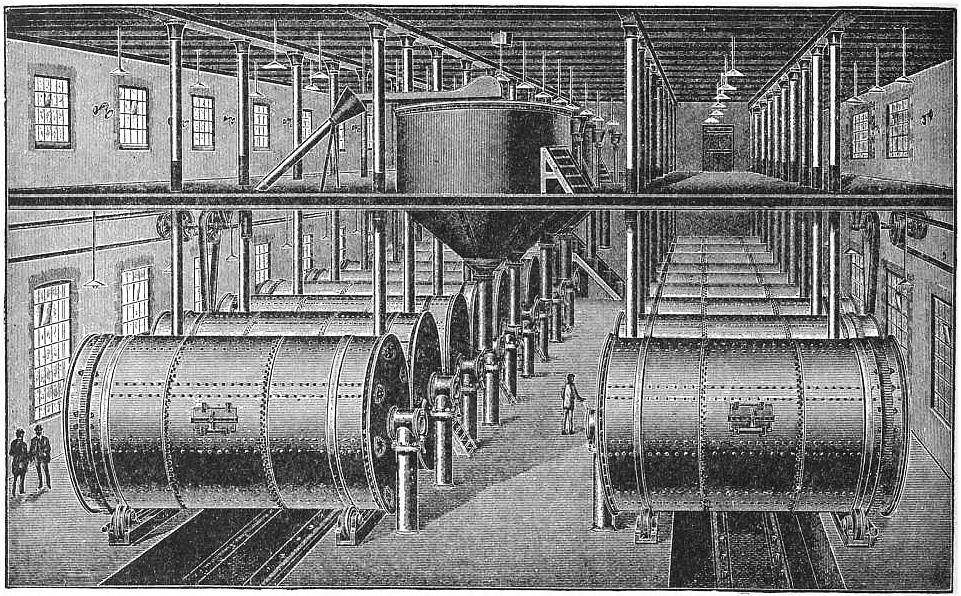Gary Gillman, Beer Et Seq
A Polish countess of ca. 1900 figures in our account, but first some background on women and brewing, which for our purposes here means brewing in the European tradition. According to a well-referenced Wikipedia essay:
From the beginning of industrialization to the 1960s and early 1970s, most women were moved out of the brewing industry, though throughout the world, they continued to homebrew following ancestral methods.
https://en.wikipedia.org/wiki/Women_in_brewing
Further reading suggests the period of exclusion started with the rise of male brewing guilds in Europe and intensified with the onset of industrialization. With the rise of modern craft brewing in the last 40 years and changing cultural attitudes, women have entered – or rather re-entered – professional brewing. Women have also been active in beer education, both consumer and academic, and form an important part of the consumer base.
Still, the brewing past provides notable examples of female achievement in commercial brewing, including in rural settings. First, a question of definition: Does a landowning member of the Polish aristocracy qualify as a “rural woman” in the present context?
Typically, women of modest means, often not benefitting from higher education, have been the focus of RWSA studies. This makes sense from numerous standpoints, especially a demographic one – the bulk of most nations’ peoples are low-earners if not often providing unwaged labour, a particular feature of women’s history.
Yet, some women who lived or worked in rural settings were not of this class, but rather its obverse: the gentry. Their challenges and achievements are still notable once the context in which they worked is factored. A good example is the “Countess Brewer” of Kiev, the city today styled Kyiv in Ukraine and formerly part of the Russian Empire. In 1896 dozens of American newspapers printed an item about the countess that apparently originated in the Philadelphia Record.

Zwierzyniec Brewery in Poland was an estate brewery established in the 19th century by Polish nobility. It has no known connection to Countess Branicka. (Budynek główny browaru w Zwierzyńcu). Via Wikipedia.
The stories describe a “Russian” countess who grew grain on her estates that was processed into beer in her brewery, also located on the estate it seems, albeit the actual location is not specified. It seems likely though that the brewery was on or near her barley-growing estate. Certainly the basic raw material for beer, barley, was grown on her lands which she had to visit regularly and probably lived at for certain periods.
The Naples Record printed the story in February 1896, see here (via Fulton Newspapers).

The story explains the countess paid a visit to a Berlin, Germany brewery to learn details of the pneumatic malting process. Her “large acreage” provided the necessary barley, but barley must be made into malt for brewing, and she could not get sufficient labor to operate a traditional floor maltings (a labor-intensive, multi-day process involving numerous steps of hydration, turning, and temperature control).
Pneumatic malting, a then comparatively recent industrial innovation, seemed the solution, and evidently the countess had kept up on technological developments in her field. Our research indicates that vital aspects of pneumatic malting had originated near Nancy, France via the work of Frenchman Nicholas Galland, and had been deployed in sizeable breweries, often in urban spaces. Milwaukee, Wisconsin was one as a firm holding a license from French and German inventors marketed such equipment from the late 19th century until the onset of Prohibition (1920).

The countess provided samples of her beer to the German brewer who hosted her, which he pronounced equal to the best German and Bohemian (now Czech) beer. Then, as today, both German and Czech lager beers were widely acclaimed. The subtext evidently was that a woman was not expected to produce beer to a high standard, yet the countess proved the contrary as objectively assessed by a both a male and urban-based brewer, in Berlin.
The news report added the countess was believed to be “the only woman brewer in Europe”. This likely was an exaggeration. In addition, it did not factor that many women worked with their husbands in breweries and provided significant, “unofficial” support to the enterprise. The quotation does attest however to the rarity of women assuming an official role in breweries at the time.
Countess Branicka

As the news piece did not name the blue-blood brewer, who was she? Probably, Rosa Maria Branicka, a member of a noble Polish family. This lady often went by her married name, Rosa Maria Tarnowska (or Tarnowski). Her husband was Count Stanislaw Tarnowski, a well-known Polish historian and literary figure. A Countess Branicka is mentioned by the author Galina Ulianova in her 2009 study Female Entrepreneurs in Nineteenth-Century Russia. At pp. 170-171:
The big landowner Countess Maria Branicka owned eleven enterprises in Kiev Province [today, Kyiv oblast]: four mills (all leased out), two distilleries, one brewery and four sugar beet plants.
If, as seems likely, the countess brewer was the figure mentioned, the scale of her industry well exceeded even the bounds of commercial brewing. Ulianova adds that in 1897 these businesses aggregated a total of 2,010 workers and realized 2.2 million roubles. This was not a cottage enterprise – more a mini-empire.
It seems likely the determined-looking woman in a Geni webpage, Roza Maria Augusta Tarnowska (1854-1942), was the countess brewer. An ancestry website devoted to the Branicka family describes Roza Branicka as a countess, moreover. Her grandfather was Count Wladyslaw Grzegorz Branicki, a member of Polish nobility and general officer in the Russian army. He owned estates outside Kiev and was a descendant of Catherine the Great. It appears Countess Branicka inherited lands through her father Konstanty, which provided the basis for her entrepreneurship.
Takeaway
There have always been complexities to the social pattern including in gender and occupational history. Commercial brewing discloses numerous instances including in the shape of Countess Branicka, the presumed Countess Brewer. She was of the land-owning gentry even if not permanently living on her agricultural estate, hence, a rural-based or -interested woman. By dint of her initiative and drive, assisted surely by her education, family networks, and wealth, she sought out a technology developed and often applied in urban spaces by males. Her goal, with evident success, was to rival the best products made by male brewers working (often) in sophisticated centers.
Acknowledgement: Many thanks to Professor Cynthia Prescott for our helpful discussions and her assistance to finalize the text.

To clarify if need be, the image of Zwierzyniec Brewery in Poland was included as an example of another estate brewery established in the 19th century by Polish nobility. It has in other words no connection to the Countess Brewer. Those interested in the history of Zwierzyniec Brewery, which still exists today, may consult my blog post on the subject: https://www.beeretseq.com/ale-and-porter-on-the-polish-main-zwierzyniec-brewery/